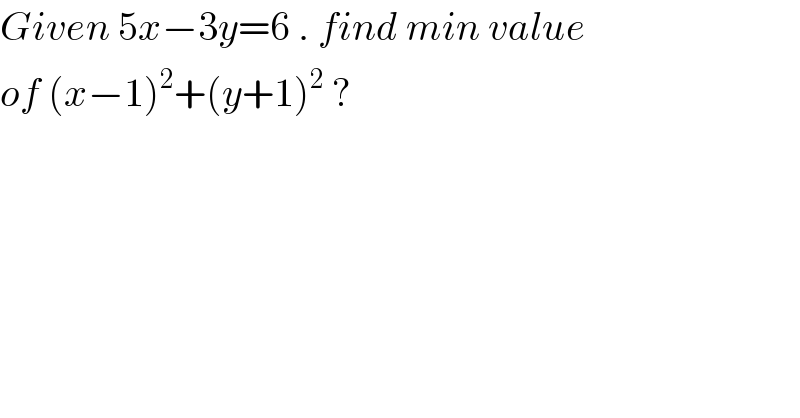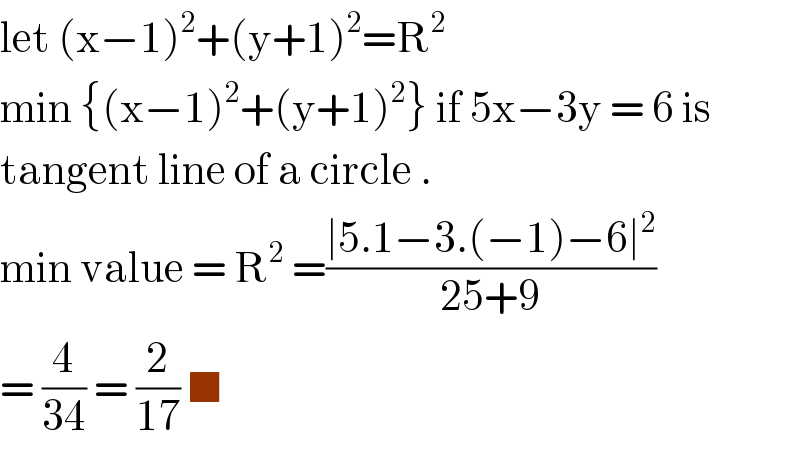
Question and Answers Forum
Question Number 99003 by bramlex last updated on 18/Jun/20

Answered by bobhans last updated on 18/Jun/20

Commented by bramlex last updated on 18/Jun/20

Answered by 1549442205 last updated on 18/Jun/20
![5(x−1)−3(y+1)=−2.ApplyingAM−GM we get (−2)^2 ≤(5^2 +(−3)^2 )[(x−1)^2 +(y+1)^2 ] ⇒(x−1)^2 +(y+1)^2 ≥(4/(34))=(2/(17)).The equality occurs when { (((5/(x−1))=((−3)/(y+1)))),((5x−3y=6)) :}⇔ { ((3x+5y=−2)),((5x−3y=6)) :}⇔ { ((x=((12)/(17)))),((y=((−14)/(17)))) :} Hence,S=(x−1)^2 +(y+1)^2 has the least value equal to (2/(34)) when { ((x=((12)/(17)))),((y=((−14)/(17)))) :}](Q99021.png)
Commented by bemath last updated on 18/Jun/20

Commented by 1549442205 last updated on 18/Jun/20

Answered by MJS last updated on 18/Jun/20
![why you folks do such complicated things? 5x−3y=6 ⇒ y=(5/3)x−2 (x−1)^2 +(y+1)^2 =((34)/9)x^2 −((16)/3)x+2 (d/dx)[((34)/9)x^2 −((16)/3)x+2]=0 ((68)/9)x−((16)/3)=0 x=((12)/(17)) (d/dx)[((68)/9)x−((16)/3)]>0 ⇒ minimum ((34)/9)x^2 −((16)/3)x+2=(2/(17))](Q99049.png)
Commented by bramlex last updated on 18/Jun/20

